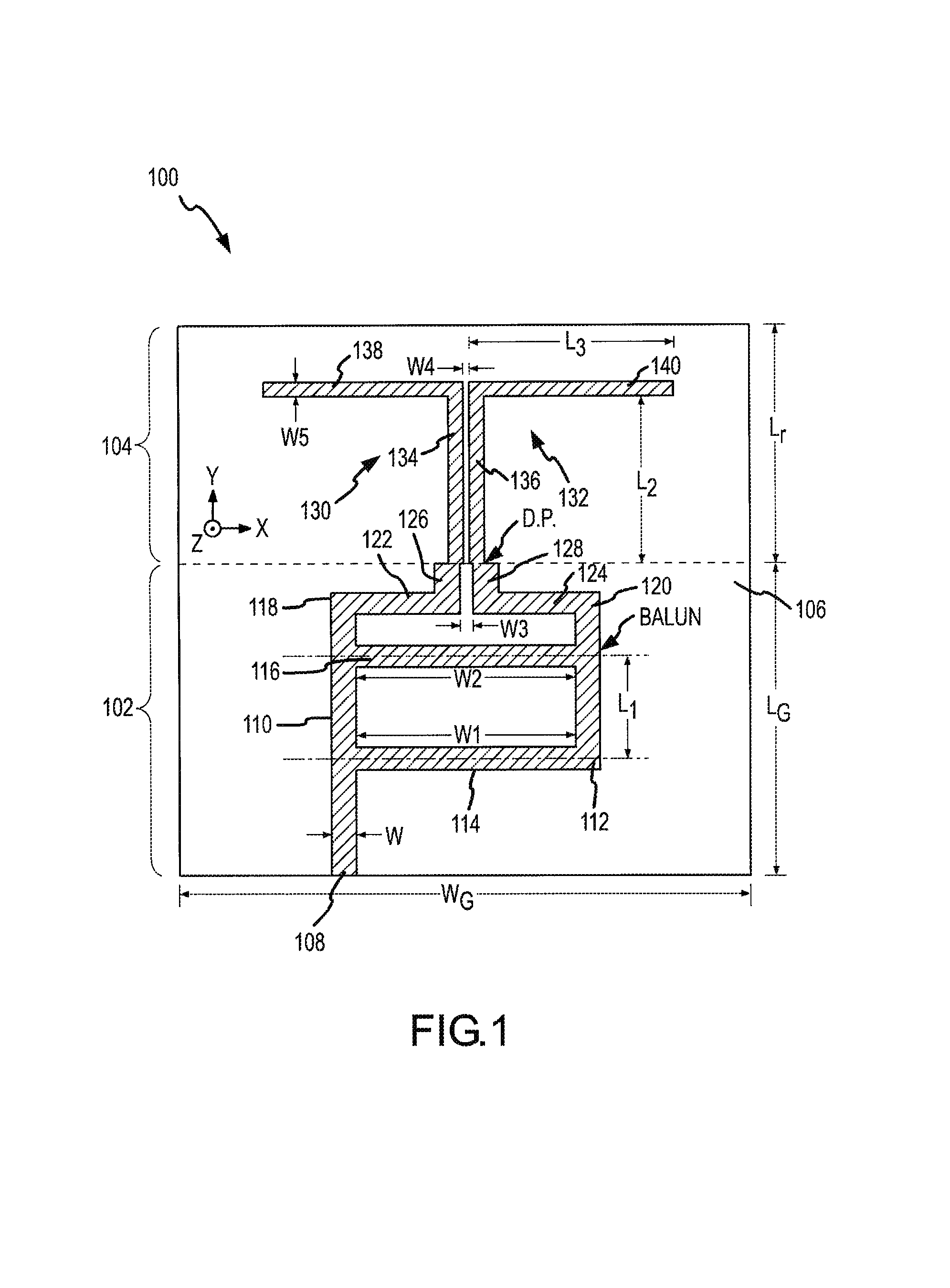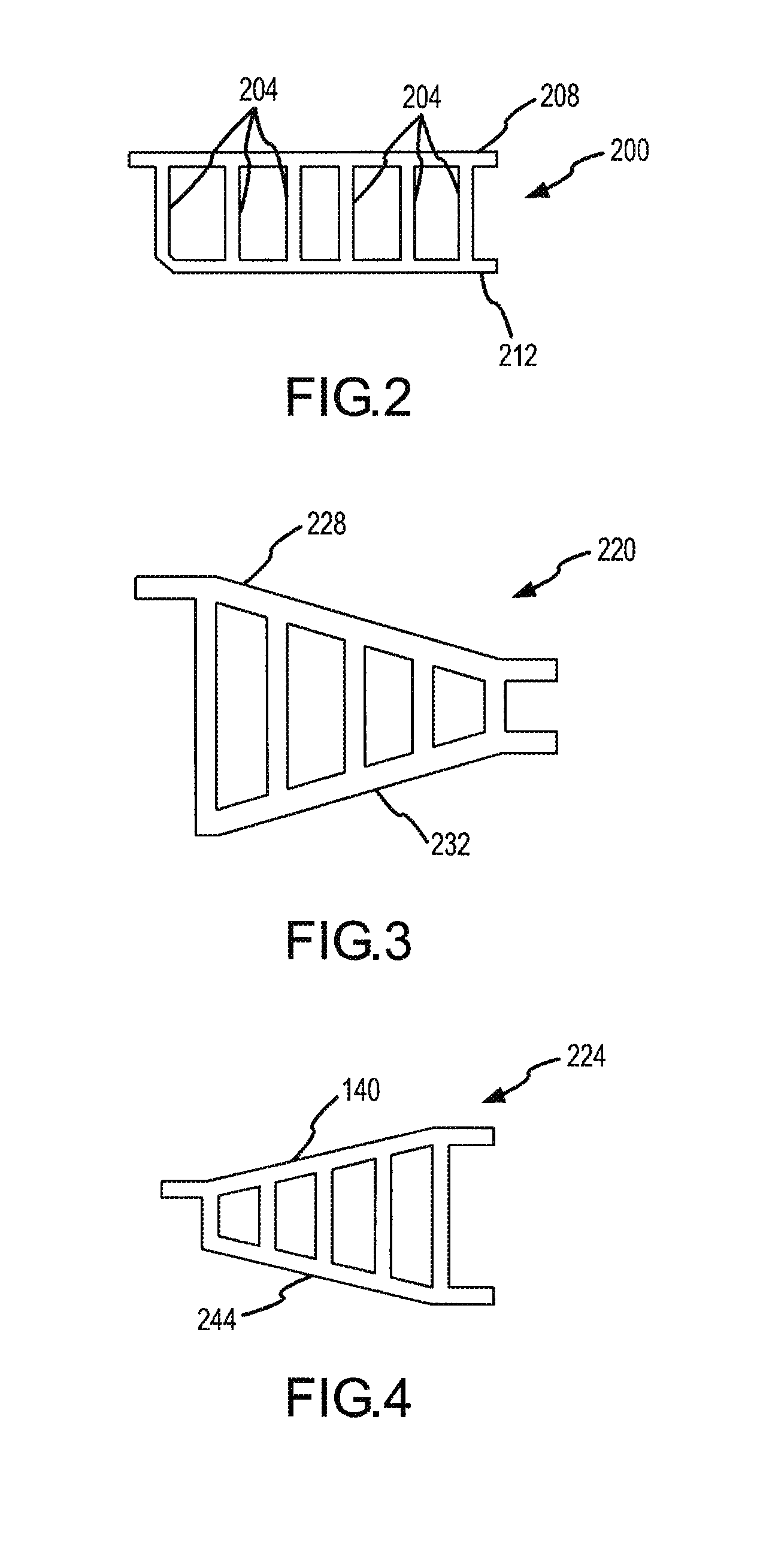Microstrip antenna
a dipole antenna and microstrip technology, applied in individual energised antenna arrays, resonant antennas, waveguide types, etc., can solve the problems of limited usefulness of dipole antennas in devices, printed circuit boards, etc., and achieve the effect of improving gain
- Summary
- Abstract
- Description
- Claims
- Application Information
AI Technical Summary
Benefits of technology
Problems solved by technology
Method used
Image
Examples
Embodiment Construction
[0016]The present invention will be described with reference to the present invention. Referring first to FIG. 1, a microstrip antenna 100 is shown. Microstrip 100 includes a power feed network 102 and a plurality of radiating elements 104. Power feed network 102 is coupled to a ground plane 106. Power feed network 102 is shown as a ladder balun. The ladder balun feed has a feed point 108, a first leg 110, and a second leg 112. While the legs are shown as substantially parallel, legs 110 and 112 can converge or diverge from feed point 108 for different effects. Feed point 108 is connected to a feed end of first leg 110. As shown, a first connecting element 114 of a length W1 connects first leg and second leg at a feed end of second leg 112. A second connecting element 116 connects first leg and second leg as well. Because legs 110 and 112 are substantially parallel, second connecting element 116 has a length W2. Length W2 is equal to W1 for the case where legs 110 and 112 are substa...
PUM
 Login to View More
Login to View More Abstract
Description
Claims
Application Information
 Login to View More
Login to View More - R&D
- Intellectual Property
- Life Sciences
- Materials
- Tech Scout
- Unparalleled Data Quality
- Higher Quality Content
- 60% Fewer Hallucinations
Browse by: Latest US Patents, China's latest patents, Technical Efficacy Thesaurus, Application Domain, Technology Topic, Popular Technical Reports.
© 2025 PatSnap. All rights reserved.Legal|Privacy policy|Modern Slavery Act Transparency Statement|Sitemap|About US| Contact US: help@patsnap.com



